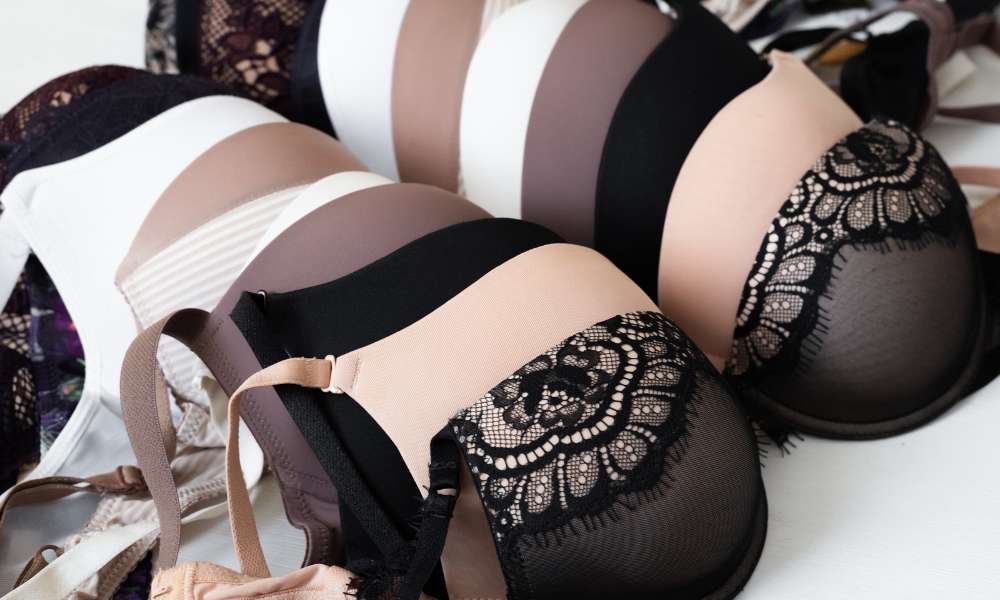Women's Underwear Trends: An Overview of Brief Styles for 2025
The landscape of women's underwear continues to evolve as we move into 2025, with comfort, sustainability, and functionality taking centre stage alongside style. From high-tech fabrics to inclusivity-focused designs, the industry is responding to changing consumer priorities whilst maintaining the essential role of quality undergarments in daily life. Modern women seek pieces that offer superior comfort throughout busy days, with many brands now prioritising breathable materials and seamless construction techniques that eliminate chafing and discomfort.

What Key Trends Will Shape Women’s Underwear in 2025?
Several significant trends are emerging in the women’s underwear market for 2025. Sustainable materials have become increasingly important, with brands incorporating organic cotton, recycled fibres, and innovative plant-based alternatives like bamboo and eucalyptus. Technology integration continues to advance, featuring moisture-wicking properties, antimicrobial treatments, and temperature-regulating fabrics that adapt to body heat throughout the day.
Size inclusivity has expanded dramatically, with many manufacturers now offering extended size ranges from XS to 6XL, alongside improved fit technologies that accommodate diverse body shapes. The seamless underwear trend persists, with laser-cut edges and bonded seams replacing traditional stitching to create invisible lines under clothing.
How Are Costs of High-Quality Women’s Underwear Developing in the UK?
The UK market for premium women’s underwear has seen notable price shifts, with quality pieces typically ranging from £8 to £45 per item depending on brand positioning and materials used. Sustainable and organic options generally command higher prices, reflecting increased production costs and ethical sourcing practices. Mass-market brands continue to offer affordable options between £3 to £12, whilst luxury segments can exceed £50 for speciality pieces.
Subscription services have gained popularity, often providing cost savings through bulk purchasing and direct-to-consumer models. Many brands now offer multi-pack options that reduce per-unit costs, making quality underwear more accessible to budget-conscious consumers.
Brands and Price Segments Overview
The UK underwear market features distinct price segments catering to different consumer needs and budgets. Budget-friendly options include supermarket own-brands and value retailers, typically priced under £10 per piece. Mid-range brands focus on comfort and durability, generally falling between £10 to £25, whilst premium and luxury segments emphasise superior materials and craftsmanship.
| Brand Category | Price Range | Key Features |
|---|---|---|
| Budget (Supermarket brands) | £2-£8 | Basic cotton, multi-pack options |
| Mid-Range (M&S, Next) | £8-£18 | Comfort focus, variety of styles |
| Premium (Calvin Klein, Victoria’s Secret) | £15-£35 | Designer styling, quality materials |
| Luxury/Sustainable (Organic Basics, Cuyana) | £25-£50+ | Eco-friendly materials, ethical production |
Prices, rates, or cost estimates mentioned in this article are based on the latest available information but may change over time. Independent research is advised before making financial decisions.
Which Brands Will Be Particularly Popular in 2025?
Several brands are positioned to dominate the 2025 market through innovation and consumer-focused approaches. Established players like Marks & Spencer continue to evolve their offerings with improved fit technology and sustainable materials, whilst maintaining their reputation for quality at accessible prices.
Direct-to-consumer brands such as Organic Basics and Nudea are gaining significant traction through their focus on sustainability and transparent manufacturing processes. These companies often provide detailed information about their supply chains and environmental impact, appealing to increasingly conscious consumers.
International brands including Uniqlo and COS have expanded their underwear lines with minimalist designs and technical fabrics, attracting consumers seeking modern, functional pieces. Meanwhile, traditional lingerie brands are adapting by incorporating comfort-first designs whilst maintaining their heritage aesthetic appeal.
The rise of inclusive brands that prioritise diverse body representation in marketing and extended sizing continues to reshape consumer preferences. Companies that successfully combine comfort, sustainability, and inclusive sizing are likely to capture significant market share throughout 2025.
The women’s underwear market in 2025 represents a mature industry responding thoughtfully to evolving consumer demands. As comfort becomes paramount and sustainability concerns influence purchasing decisions, successful brands will be those that balance innovation with accessibility. The continued expansion of size ranges and improvement in fit technology suggests a more inclusive future for the industry, whilst technological advances promise enhanced comfort and functionality for everyday wear.




